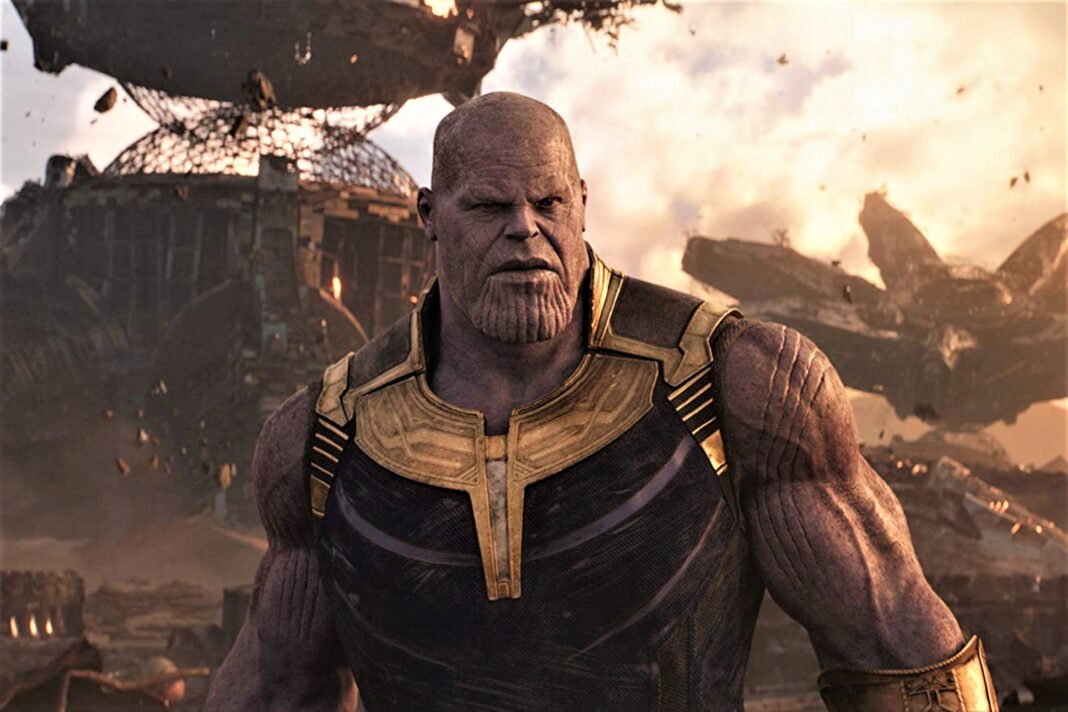Marvel Studios
Fake muscles are in. The future is here, and it looks so young and jacked. Maybe you didn’t notice, but it’s been happening for more than a decade. Brad Pitt aged backwards in The Curious Case of Benjamin Button, Arnold Schwarzenegger appeared 30 years younger and in 1975 Mr. Olympia shape in Terminator Genisys, and three more recent movies—Captain Marvel, Gemini Man, and The Irishman—featured youthful facsimiles of superstar actors. Computer generated-imagery (CGI) is the new Botox in Hollywood, and the new Synthol, too.
FAKE MUSCLES: STRONG SUITS
In the old days, and by that we mean just a few years ago, there were three ways to get yoked physiques on screen: cast ’em, train ’em, or suit ’em.
Cast ’em: The Rock.
Train ’em: Hugh Jackman as Wolverine.
Suit ’em: everyone who’s played Superman or Batman. As both the dedication to workout/diet routines and suit technology have improved, we’ve seen actors and costumes grow increasingly more jacked, and that has, thus far, fended off a great need to diesel stars up with CGI.
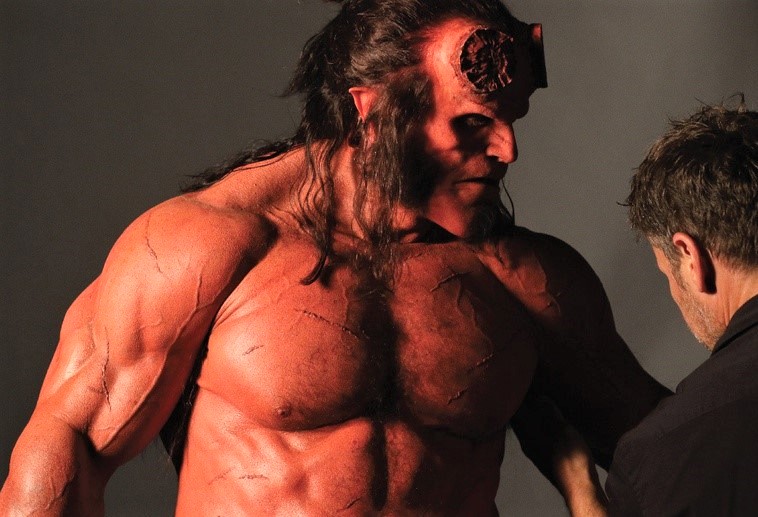
Perhaps the best example of this is the titular character in 2019’s Hellboy, an outsized half-demon, who you might think would best be created via computer programming. However, David Harbour’s muscles fooled even castmate, Daniel Dae Kim. “The bodysuit that he wears is so convincing as real musculature that it took me a while to realize it wasn’t David,” Kim admits. “It was great to see all the details like the hairs that are on the chest and the veins that come through the arms.” The state-of-the-art suit makes the flatter one Ron Perlman wore in the original Hellboy, 15 years before, look like a Halloween costume.
FAKE MUSCLES: ADDING HAMSTERS
Just as sinew suits have improved, so has CGI. The blue, glowing muscleman Dr. Manhattan—an animated mashup of the late fitness model Greg Plitt’s body and actor Billy Crudup’s head—in Watchmen (2009), didn’t quite convince. Terminator Genisys (2015) was a leap forward when the then-67-year-old Arnold battled his 36-year-old cyborg self from The Terminator (1984). Bodybuilder Brett Azar acted out the younger cyborg’s movements, but then computer-generated imagery turned Azar into young Arnold.
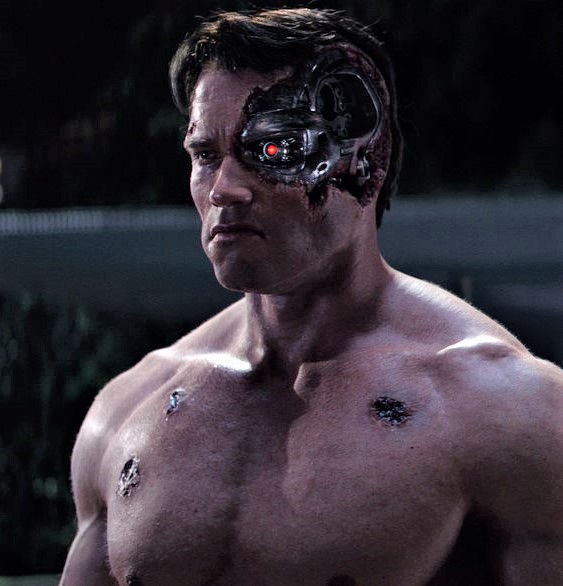
Terminator Genysis‘ visual effects supervisor, Sheldon Stopsack explains, “When I first heard about re-creating the young Arnold character appearing in 1984, it was something that I said to myself would be completely crazy to take on….The more I thought about it, at the same time, it presented an incredibly great challenge and opportunity as well and got me really excited….I personally watched every single Arnold movie around that period. I went through books about that time and Pumping Iron…So, we had to take in every single piece of footage we could get our hands on with Arnold, in order to do our homework and our research.” The convincing result was a bit of time travel in a movie about time travel, as the aging action star confronts his youthful, jacked self.
Most of the muscle-making visual effects of recent years have created superheroes and supervillains too big for actors or muscle suits. And there’s no better example than Thanos, a CGI-version of Josh Brolin in the mega-blockbusters Avengers: Infinity War (2018) and Avengers: Endgame (2019). A priority was making sure his colossal muscles tensed and rippled so they appeared neither suit-like nor artificially animated. According to the animation news site Cartoon Brew, the CGI crew called the addition of the fake muscles rippling “adding hamsters.”
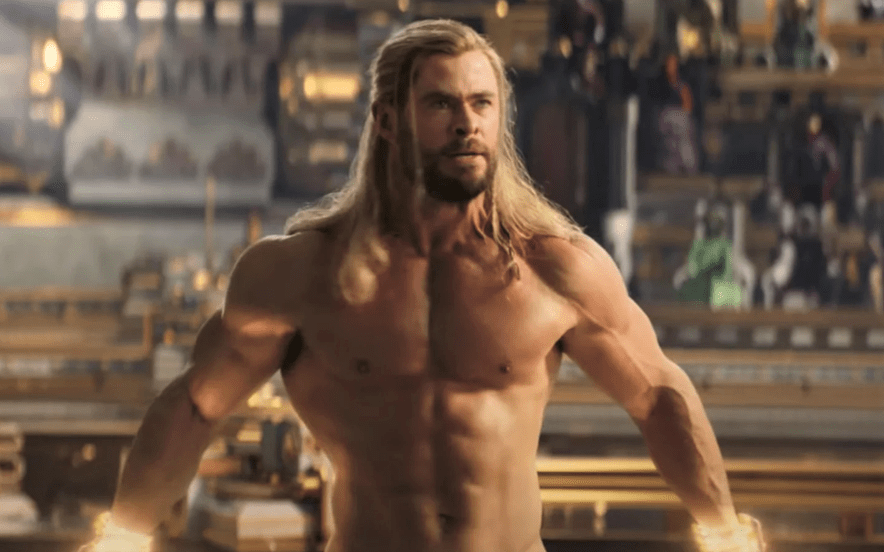
“The arms needed to always be alive,” said animation director Phil Cramer, “because we didn’t want to have the look of concrete shoulders or concrete arms on this huge character.” To bring Thanos’ muscles to life, they turned to the muscleman in the cast, Chris Hemsworth, Thor in both movies. “Out of all the people, we had so much footage of him without a shirt on or with exposed arms, and that guy just has so much muscle movement happening on every little twitch that he does. A traditional muscle system doesn’t really help you there because when an arm goes down, nothing much is going on. So really we ended up exaggerating Chris Hemsworth and art-directed those muscles to taste.”
FAKE MUSCLES: VIRTUALITY
This decade and beyond, visual effects will be used to remove fat and add muscle to actors in less obvious ways. Will Smith, who, at 51, appears as his 23-year-old self throughout Gemini Man, told Wired that he’ll be able to effortlessly adopt different body types for roles. Instead of training six hours a day for a year to transform himself from a lanky 185 to a yoked 220 as he did for Ali (2001), he can just let his physique be digitally morphed or his head transplanted onto a boxer’s body. (The latter technique was used in Game of Thrones. When Lena Headey as Cersei did her walk of shame, it was her head on another woman’s naked body.)
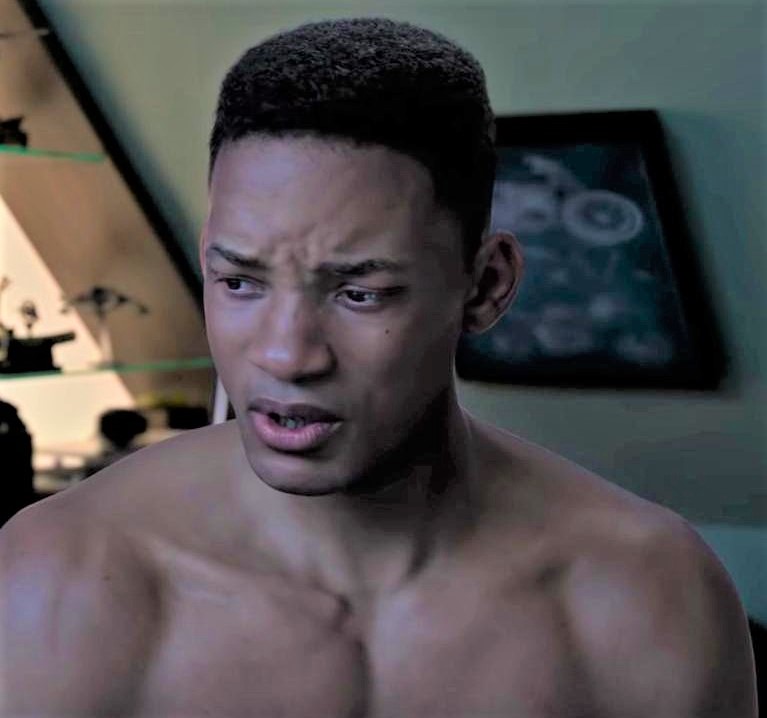
Couch potato thespians will be able to play athletes, superheroes, strippers, and gladiators without ever stepping in a gym or downing a protein shake—or, more subtlety, they can just digitally get a little leaner here and a little rounder there for a nude scene, and tighten up the jawline while you’re at it, please. “The public needs to be educated as to the kinds of things they can expect,” says Darren Hendler, director the Digital Human Group. “We’re all going to have to change our understanding of what we believe is real.” We have the technology. Some of this decade’s “hot celebrity trainers” will be digital animators.



































